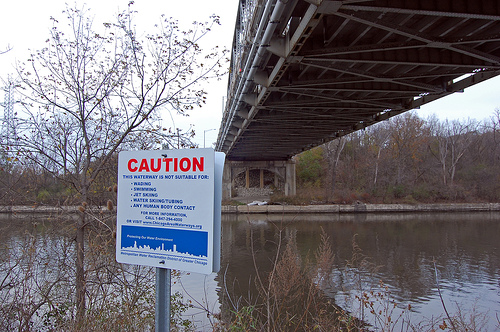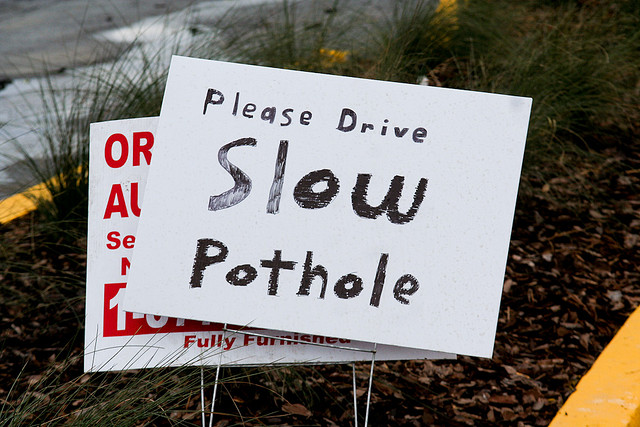Why do we have to pour so much of our transportation money into highway infrastructure? Well, because 50 years ago, the U.S. decided to structure roads in a way that was cheap to build but expensive and difficult to maintain. It's the infrastructure equivalent of buying a cheap crappy blender and then having to replace it every year.
In the early days of the interstate highway system, most freight went by train. Because highways only had to support private vehicles, the priority was quick, cheap construction, not durability. Once shipping companies took to the streets, their trucks quickly made a hash of the asphalt-over-dirt construction. Heavier vehicles did disproportionate damage to the highways, because they made small leaks in the asphalt into giant, street-eating potholes.
When a road is not properly sealed, water or ice can sneak underneath the asphalt, settling into the then-tiny void between the pavement and whatever is used as a base for the road. In the quickly-constructed roads of America, this is usually compacted dirt. Then, "when big trucks drive over a section of pavement, it pushes down on that water pocket," explains Lomax. "The water has to go somewhere." Now put yourself in the water's place: Where would you go? Up, through the asphalt, or down into the dirt, aided by gravity and the pressure from above. Exactly. The water goes down, and it forces some dirt out of its way in the process, creating an enlarged pocket underneath the pavement. The water or air pocket beneath the road will eventually allow what's on top of it to crack. And the more pressure on the rift and the space below it, and the bigger the hole.
It didn't have to be this way. In Germany, highways are built on a foundation of concrete, rather than packed earth, and they require a lot less maintenance. But that requires higher up-front costs, which taxpayers balk at. And cutting corners in construction means a maintenance nightmare — especially if, like so many roads, your highway ends up seeing more traffic than anticipated.
Before a new road is built, engineers predict how much and what kind of use it's going to get. This is fine if an area's expected growth stays on track, but say a new suburb springs up or a massive manufacturing facility is constructed, then suddenly the stretch of road is flooded with more vehicles than it can handle. When the load increases dramatically, it increases the amount of upkeep and shortens the road's expected life. Furthermore, where construction is involved, what is often left off of the balance sheet is how much travelers lose in gas and time. Our pocket books are essentially being hit twice.
Getting people off the road would help mitigate the impact of those long-ago cost-cutting decisions. The alternative is tearing up roads and replacing their dirt underpinnings with concrete, which probably won't make anybody happy.



